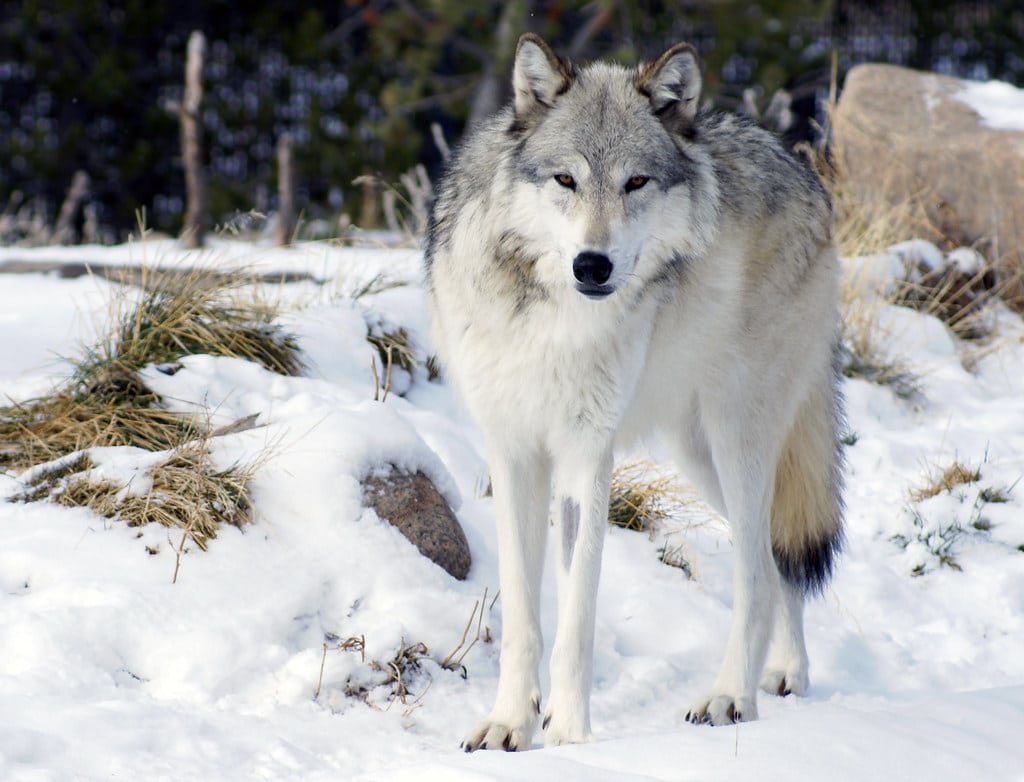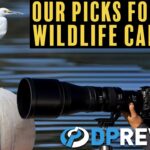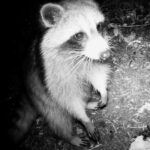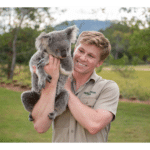Key Takeaways
-
The Sony A7S III’s 12 MP sensor excels in low light conditions, making it ideal for capturing wildlife in their natural habitats.
-
Its advanced autofocus system, including animal eye AF, allows for sharp and precise tracking of fast-moving subjects like wolves.
-
High ISO capabilities and improved noise performance are game changers for shooting in challenging lighting situations.
-
Slow motion and in-body image stabilization features enhance the visual storytelling of wildlife documentaries.
-
Understanding and utilizing the camera’s settings can significantly improve the quality of wildlife footage.

“Standing Wolf | Taken at the Grizzly …” from www.flickr.com and used with no modifications.
Unleashing the Power of the Sony A7S III in Wildlife Documentaries
When the wild calls, you answer with not just your presence, but with the readiness to capture its fleeting moments. The Sony A7S III, with its formidable features, stands as a trusted companion for wildlife filmmakers. Let’s dive into what makes this camera a powerhouse in the unforgiving and unpredictable world of wildlife cinematography.
Framing the Wild: The Essentials of the Sony A7S III
Imagine yourself in the heart of the wilderness, where every second counts and every detail matters. The Sony A7S III brings to the table a host of features that cater specifically to the demands of wildlife filming. With its full-frame sensor that delivers exceptional low light performance, you’re equipped to chase the shadows and unveil the mysteries of the animal kingdom.
Why the Sony A7S III is a Game Changer in Wildlife Filming
The quest to document wildlife is fraught with challenges, from the need for stealth to the unpredictable movements of your subjects. The Sony A7S III rises to the occasion with its sophisticated autofocus system, ensuring that your focus stays locked on the eyes of the animal, be it a wolf on the prowl or an eagle in flight. This is the edge you need when every frame is a story waiting to be told.
Behind the Lens: Understanding the Sony A7S III
Now, let’s pull back the curtain and take a closer look at what makes the Sony A7S III such a remarkable tool for wildlife filmmakers.
Key Features for Capturing Life in the Wild
Here are the standout features of the Sony A7S III that you’ll want to harness in the field:
-
Exceptional Low Light Performance: With an ISO range that soars to new heights, the camera empowers you to shoot under the stars or in the dim pre-dawn light without compromising on quality.
-
Advanced Autofocus: The camera’s real-time tracking and animal eye AF feature keep your subjects in sharp focus, even when they’re on the move.
-
4K Video Quality: Capture the minutiae of the wild in stunning detail, thanks to the camera’s 4K recording capabilities.
Analyzing the 12 MP Sensor: Less is More?
Some might question the 12 MP sensor, but in the realm of wildlife videography, it’s not the quantity of pixels but the quality of each that counts. This sensor size allows for larger pixels, which in turn means better light gathering capabilities. What you get are crisp images and videos, even when filming under the canopy of an ancient forest or in the low light of dusk and dawn.
Setting the Scene: Challenges in the Cold
When winter blankets the landscape, wildlife filmmakers face a unique set of challenges. The cold is unrelenting, batteries drain faster, and the creatures are shrouded in a silent world of white. But it’s here, in this frosty realm, where the Sony A7S III truly shines. Its resilience in low temperatures means you can keep rolling when the mercury drops, capturing the raw survival of wolves against the stark beauty of their icy domain.
The Dance of Stealth and Patience: Positioning for the Perfect Shot
Getting that perfect shot is a delicate balance between being invisible and being in the right place at the right time. You have to blend into the environment, move slowly, and wait patiently. The Sony A7S III’s silent shooting mode is your ally here, allowing you to capture high-resolution footage without startling your subjects, preserving the natural behavior of the wolves as they interact with their pack and environment.
Field Lessons: Filming Wolves with the A7S III
Out in the field, the Sony A7S III becomes an extension of your senses, its features tuned to the rhythms of the wild. Let’s walk through the experiences and lessons learned while filming these majestic creatures.
Lighting the Shadow: Low Light Performance Review
The real test of any wildlife camera is its performance as daylight fades. With the Sony A7S III, the fear of losing your shot to the encroaching darkness is a thing of the past. Its exemplary low light capabilities mean that you can capture the wolves’ nocturnal activities with clarity and detail, extending your shooting hours well into twilight.
A Symphony of Movement: Slow Motion and Image Stabilization in Action
Wildlife filmmaking often requires a slow-motion perspective to appreciate the nuances of animal behavior. The Sony A7S III delivers this in spades, with its ability to shoot high frame rates, giving you a window into the subtleties of a wolf’s movement. Combine this with the camera’s robust image stabilization, and you have smooth, captivating footage that brings the viewer into the heart of the action.
From a Whisper to a Howl: Capturing Clear Sound Amidst Winter Winds
Sound is half the story in any wildlife documentary. The Sony A7S III’s audio capabilities ensure that the whisper of snow underfoot, the rustle of dry leaves, and the haunting howl of a wolf cut through the winter winds with crystal clarity. Pair the camera with a quality microphone, and you’re all set to record the full auditory experience of the wild.
Branches and Burrows: Tips for Aspiring Wildlife Filmmakers
As we delve deeper into the art of wildlife filmmaking, it’s essential to remember that the camera is just one piece of the puzzle. There are techniques and practices that, when combined with a tool like the Sony A7S III, can elevate your work from mere footage to compelling storytelling.
Toolbox Essentials: Must-Have Gear for Wildlife Enthusiasts
Before you venture out into the wild, make sure you’re well-equipped. Here’s a checklist of gear essentials:
-
A sturdy tripod or monopod for stable shots
-
Extra batteries and memory cards, as cold and continuous shooting can deplete resources quickly
-
Weatherproof bags and cases to protect your equipment
-
A high-quality microphone for capturing the subtle sounds of nature
-
Camouflage covers for the camera and lens to blend into the environment
Respecting the Pack: Ethical Wildlife Photography Practices
Remember, we are guests in the wild. It’s our responsibility to minimize our impact and respect the creatures we’re documenting. Keep a safe distance, use long lenses to avoid disturbing the animals, and never bait or interfere with their natural behaviors. The story you’re telling is not just about the animals; it’s about the respect and reverence we owe to their world.
Conveying the Untold: A Wrap-Up of Winter Tales
As the winter snows melt and the tales of survival are tucked away in your footage, the Sony A7S III stands as a silent witness to the resilience of wildlife. In the editing room, you piece together the narrative, your footage now a powerful voice for those who cannot speak for themselves. The wolves’ tale of winter survival, captured through your lens, is ready to inspire and move audiences around the globe.
Editing for Emotion: Piecing Together the Story
Editing is where the raw footage transforms into a story. With the Sony A7S III’s footage, you have the flexibility to play with color grading and layering sounds that evoke the emotions of the wild. As you edit, remember to highlight the moments that showcase the wolves’ perseverance, the tender care for their young, and the stark beauty of their icy realm. It’s in these details that your documentary will resonate with viewers.
Sharing the Splendor: Impacting Audiences with Wildlife Narratives
Documenting the majestic lives of wolves in their natural habitat can be both challenging and rewarding. By using advanced camera technology, like the Sony A7S III, filmmakers are able to capture the nuanced behaviors of these enigmatic creatures, providing audiences with a vivid window into their world.
The final step in your journey is sharing the finished piece. Whether it’s a film festival, a social media platform, or a television broadcast, your work has the power to change perceptions and foster a deeper appreciation for wildlife. The Sony A7S III has helped you tell a story that’s visually stunning and emotionally gripping – a story that’s not just seen but felt.
Frequently Asked Questions (FAQ)
Is the Sony A7S III suitable for beginner wildlife videographers?
Yes, the Sony A7S III is a fantastic tool for beginners, thanks to its user-friendly interface and forgiving features like in-body image stabilization and advanced autofocus. However, it’s also a camera that professionals swear by, so as your skills grow, the A7S III will continue to meet your needs.
What are the advantages of a 12 MP sensor for wildlife photography or videography?
The 12 MP sensor of the Sony A7S III is specially designed for low light and video performance. Larger pixels mean better light sensitivity and less noise, which is crucial for capturing wildlife in natural, often dimly lit, environments.
How does the Sony A7S III perform in extreme weather conditions?
The Sony A7S III is built to withstand the rigors of professional use, which includes extreme weather conditions. Its weather-sealed body can handle cold, heat, dust, and moisture, making it a reliable companion for wildlife filmmaking in any environment.
Can the Sony A7S III track fast-moving subjects like wolves effectively?
Absolutely. The camera’s real-time tracking and animal eye AF are designed to keep fast-moving subjects in focus, even when they’re darting across the frame or coming in and out of view.




